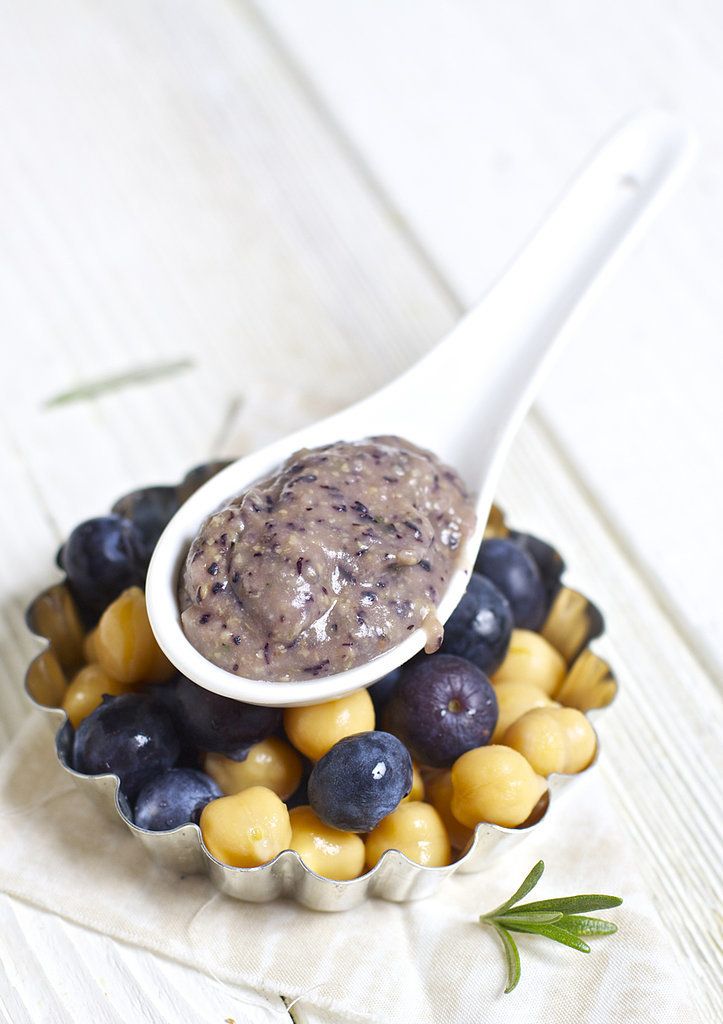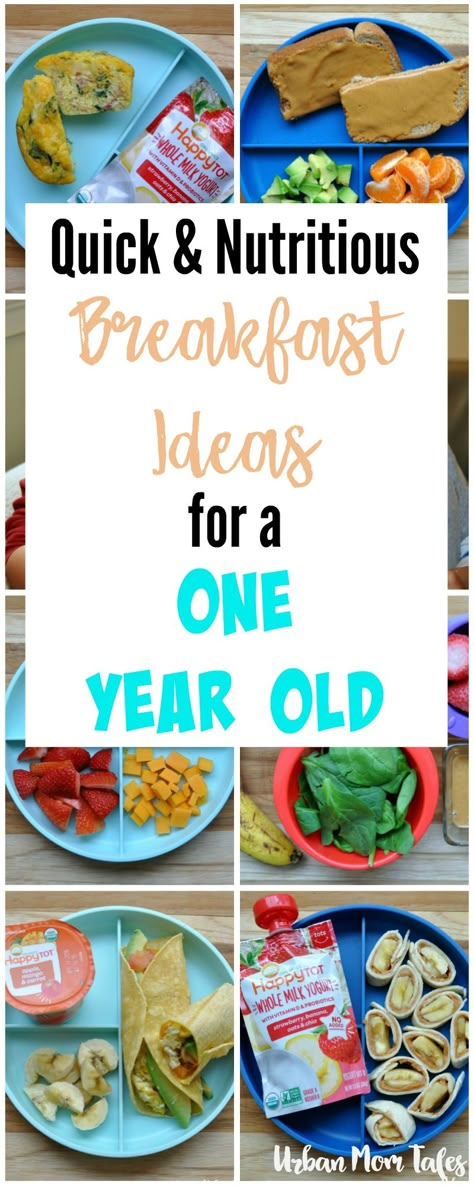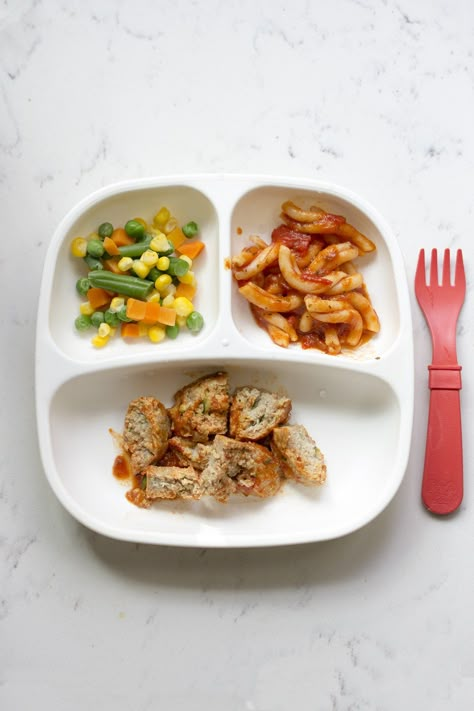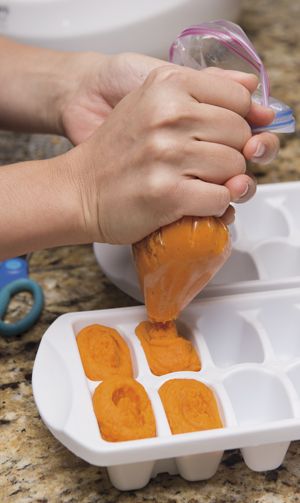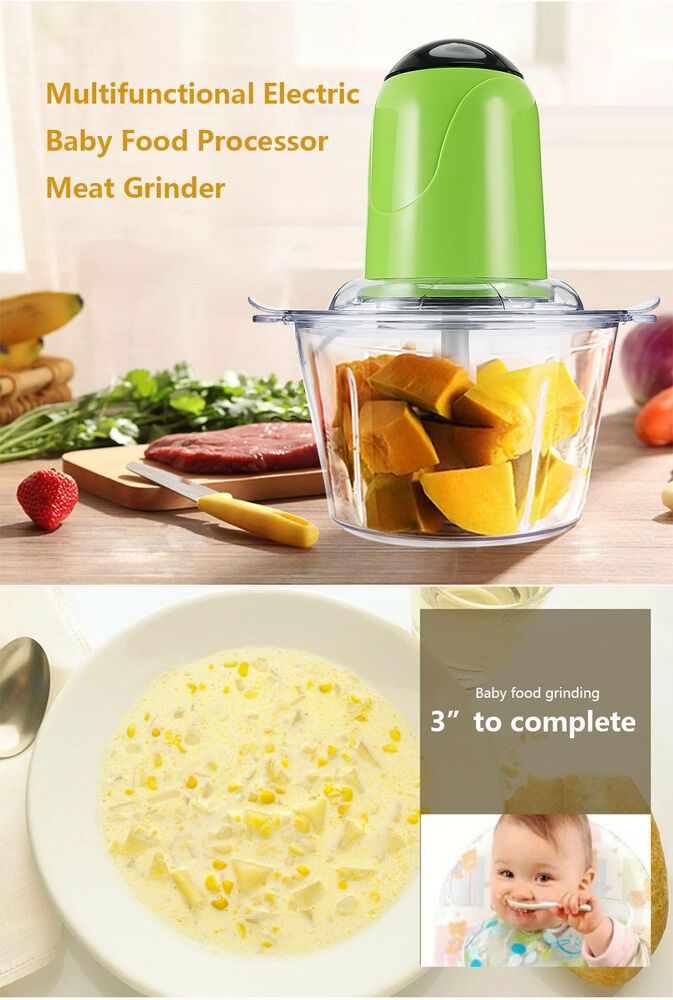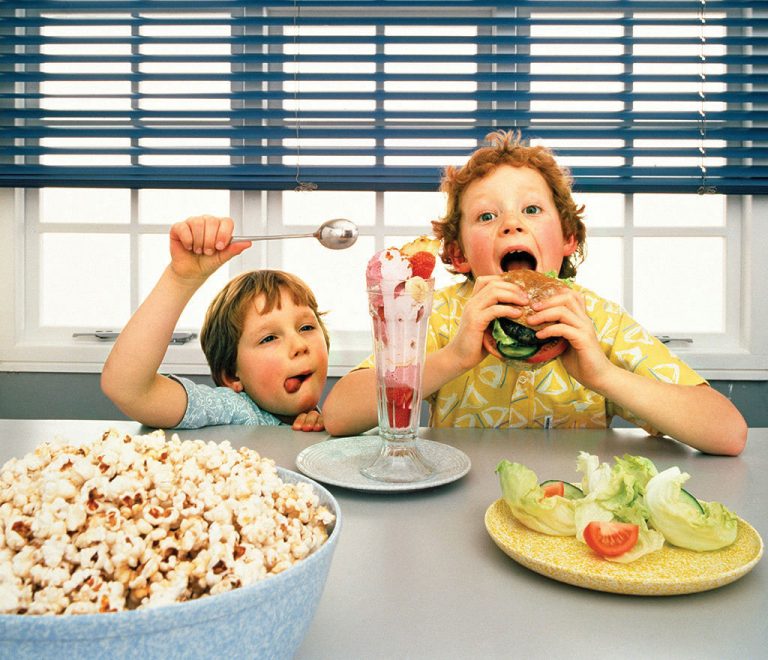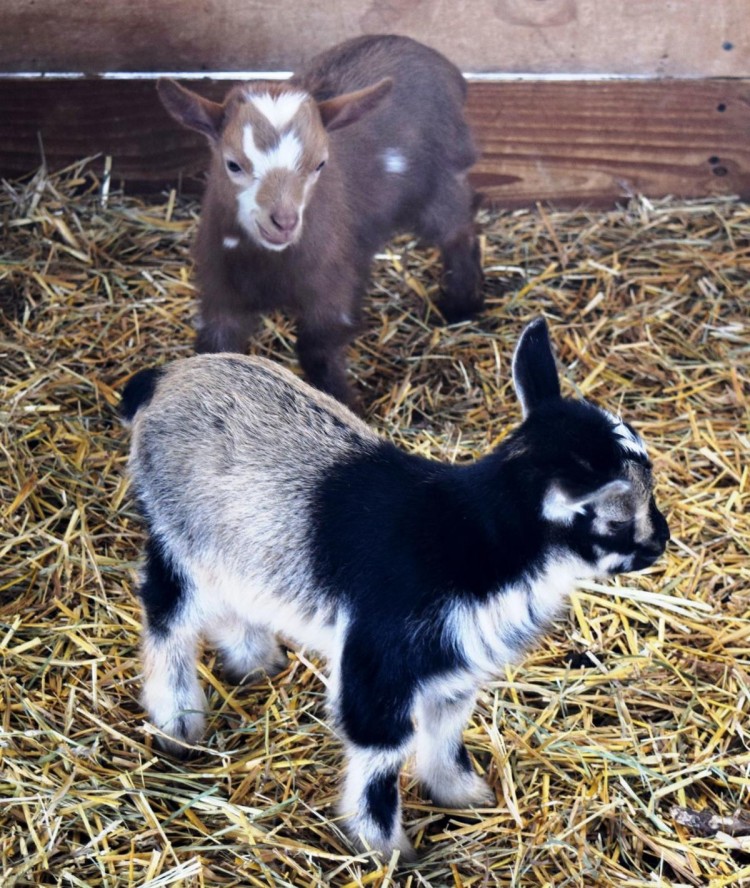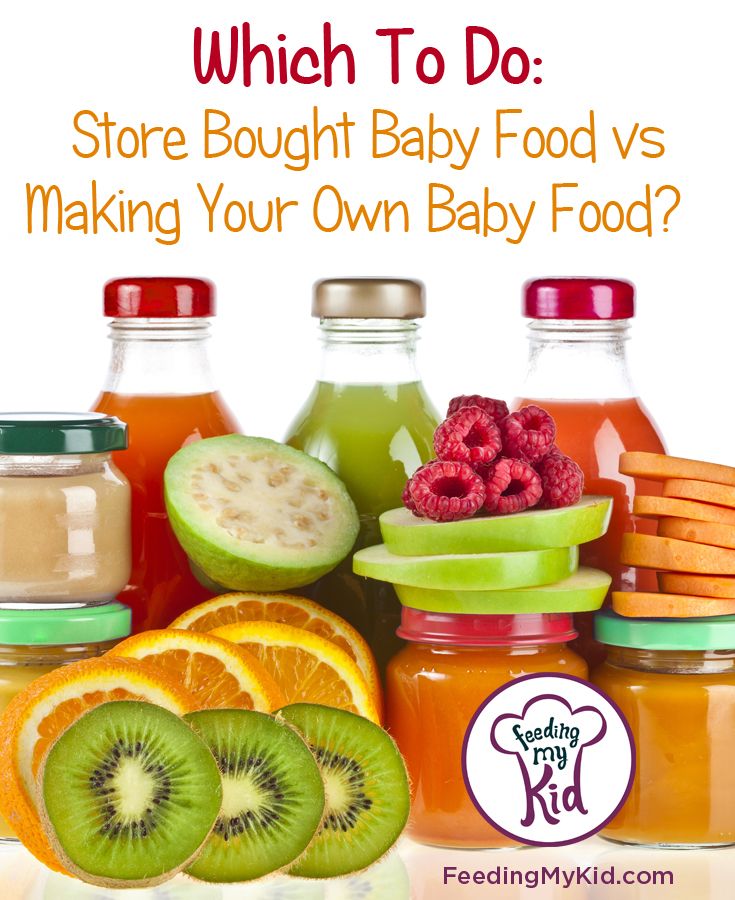Homemade baby food with chicken
Basic Chicken Baby Food Recipe (6 months - Stage 1)
Home » Feeding Style » Baby Food Purees » Stage One » Basic Chicken Baby Food Recipe
This homemade Basic Chicken Baby Puree is a great addition to your baby’s favorite purees for extra protein and flavor! It’s an incredibly simple recipe with big flavor and nutrition! It’s perfect as a Stage One Baby Food or 6+ months.
Medically reviewed by Jamie Johnson, Registered Dietitian Nutritionist (RDN), and Lauren Braaten, Pediatric Occupational Therapist (OT).
Chicken Baby PureeChicken 🍗 is full of essential vitamins, fat, and protein that your baby needs for their development. But pureed chicken for your baby? 🤔
I know, I know, I know. Pureed chicken for baby sounds… err.. gross. I get it! I was once thinking the same thing when I started my baby food journey because my only reference to a chicken puree for your baby was a self-stable store-bought chicken puree, which is 💯% not the best (trust me, I tasted them all).
And if I don’t want to eat it, I’m not going to serve it to my baby!
Baby food should be as good, if not better, than the food we eat.
But guys, without bias, this homemade chicken baby food puree is legit! It is gently cooked with chicken, earthy parsley, and a deep, rich broth. The key here is to cook the chicken just right — we do not want overcooked chicken. Then, we blend it up with a little extra broth, and you have yourself a creamy puree that tastes like a blended chicken noodle soup.
While some babies love this taste of a meat puree, others might find it a bit intense. That is totally okay. For starters, you can mix this chicken puree into any other fruit or veggie baby food you know your little one will love.
Is it your first time making homemade baby food? Then I suggest you start this journey by reading my in-depth Guide on How to Make Homemade Baby Food. The detailed guide goes over all the important information such as the best cooking tools to have on hand, safe storage, how to know when baby is ready for solids, how to introduce purees, the best first foods for baby, and more! You can also check out my best-selling cookbook for even more information and recipes!
Chicken Puree for Baby Video
Watch this video to see how easy this Chicken Puree recipe is to make!
Reasons to Love this Basic Chicken Puree- simple yet flavorful
- packed with protein
- great to add to any other fruit or veggie puree that baby loves
- baby food for 4 months and up
- stage 1 baby food
- freezer-friendly
- homemade
Make sure to read the recipe card below for the full list of ingredients and instructions!
- Chicken: As random as it may seem, chicken is the star of the show in this puree.
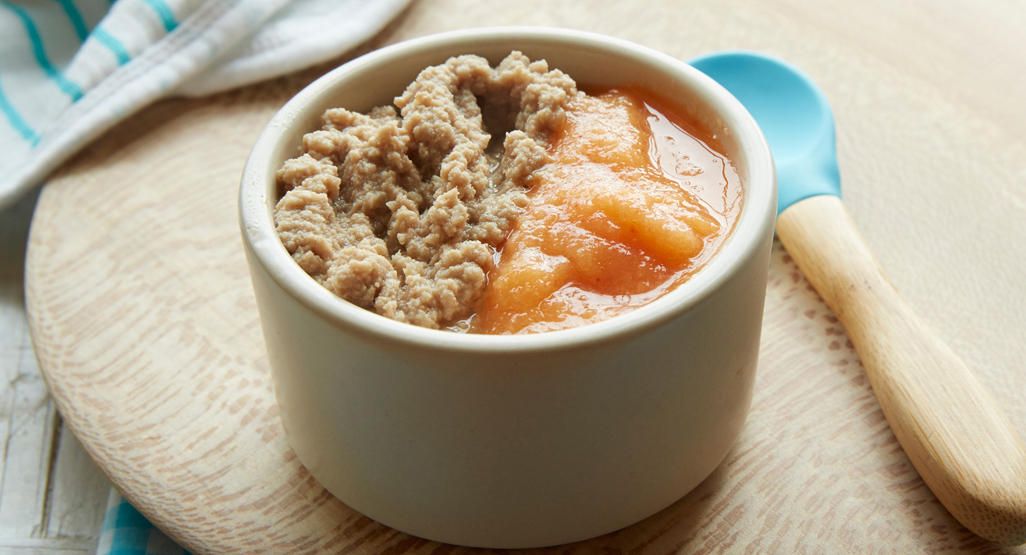 We are going to use an 8oz piece of boneless skinless chicken breast for this recipe. You can also use chicken thighs, but the puree will have a slightly different taste due to the higher fat content found in chicken thighs compared to breasts. You can also easily scale up this recipe if you want more than 12 ounces of baby food.
We are going to use an 8oz piece of boneless skinless chicken breast for this recipe. You can also use chicken thighs, but the puree will have a slightly different taste due to the higher fat content found in chicken thighs compared to breasts. You can also easily scale up this recipe if you want more than 12 ounces of baby food. - Broth: To get that rich, deep chicken flavor, we will cook our chicken in chicken broth. I recommend using a low-sodium, sodium-free, or free-range chicken bone broth for this recipe. You can also use any of those variations above with a vegetable broth as well. If you don’t have any of those on hand, you can use water.
- Parsley: We are adding dried parsley to give the puree a little more complex taste. This can easily be omitted if you prefer.
Organic Chicken: I highly recommend using organic chicken for this recipe, if possible. The organic chicken will be free of antibiotics, synthetic pesticides and will be fed a GMO-free diet.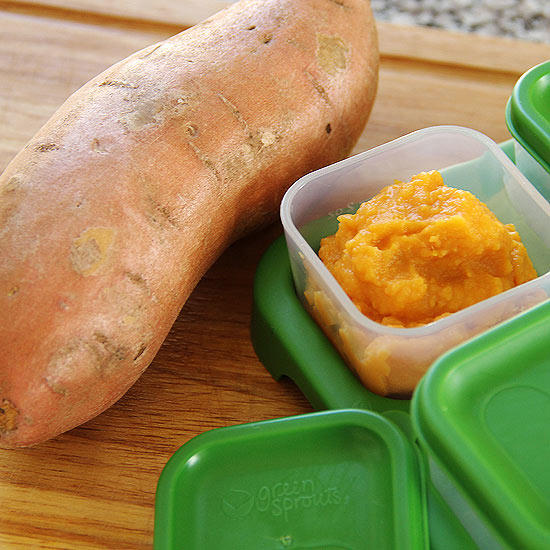 Pasture-raised is also recommended for more Omega-3 fatty acids (healthy fats).
Pasture-raised is also recommended for more Omega-3 fatty acids (healthy fats).
- High in protein for healthy muscle growth
- Contains iron, which is necessary to make hemoglobin, a protein in red blood cells
- Contains vitamin B12 for healthy nerve and blood cells and making DNA, and choline that helps promote brain development
- Boil: In a medium saucepan, bring the cubed chicken, broth, and parsley to a boil over medium heat.
- Simmer: Turn the heat down to low and cover the saucepan. Simmer it for 15-20 minutes or until the chicken is just cooked through. Let it cool slightly.
- Puree: Using a slotted spoon, transfer the chicken to a blender or food processor and puree until you reach your desired consistency, adding broth in 1/4 cup increments if needed.
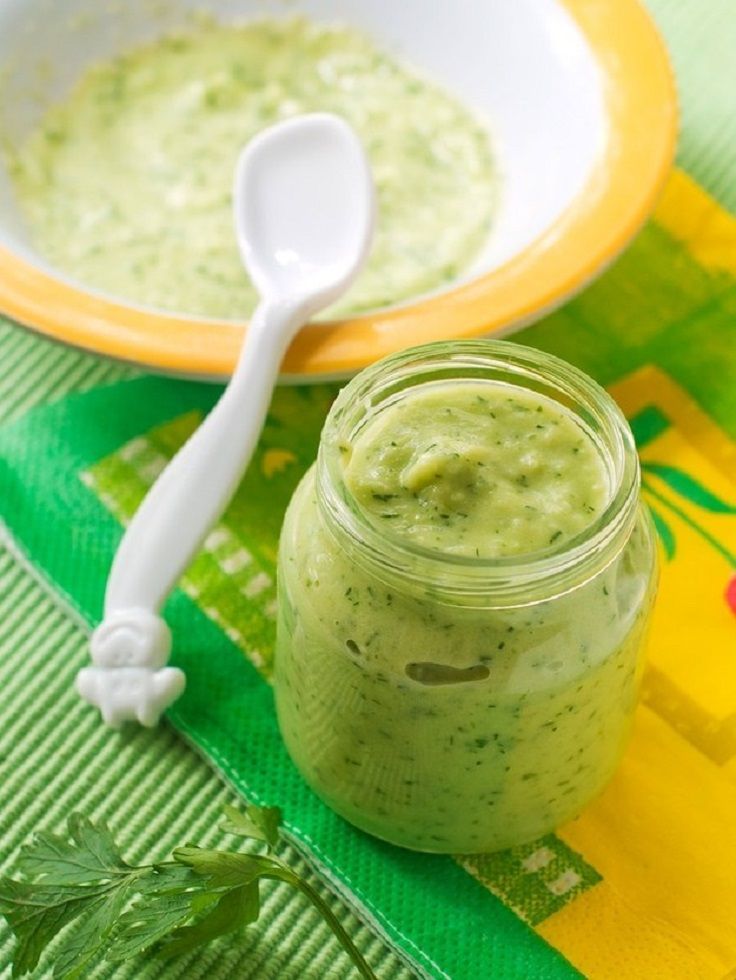
- Eat: Serve to your baby plain or added into another puree.
- Freeze: Store a small portion in the fridge and freeze the rest for another meal.
- Blender or Food Processor
- Storage Containers for Fridge
- Freezer Tray
- Stasher Bag
- highchair
- suction bowl or baby bowl
- Bamboo Baby Spoon
- bib with catch pocket
WeeSprout Silicone Baby Food Freezer Tray
Our favorite freezer storage container for baby food! Made of 100% food-grade silicone and comes with a hard clip-on lid. Large 3oz sections with 2oz markings to make sure you have the right amount for your baby.
View Product
How to Store Chicken PureeRefrigeratorYou can store this puree in an airtight container in the fridge for up to 3 days.
FreezerThis puree can be frozen for up to 2 months.
- Spoon puree into a freezer storage container (this is my favorite freezer storage container). Do not overfill.
- Place the lid on the storage container or cover with a piece of saran wrap, and label with the date and recipe name.
- Place the tray into the freezer and let it freeze completely — preferably overnight.
- Pop-out the baby food cubes and place them in a ziplock baggie or stasher bag. Don’t forget to relabel the baggie or stager bag for future reference.
Need more information on how to store your baby foods? Head over to my Best Baby Food Storage Containers – Plus 6 Tips on Freezing and Thawing post!
Label Tip: Don’t forget to label your purees before you place them in the fridge or freezer with the name of the puree and the date you made it. Take it from me; by the end of the week, you will completely forget what is in your freezer and how long it’s been there 😉
Frequently Asked Questions
When can baby eat chicken puree?
Baby can eat chicken as one of their first foods.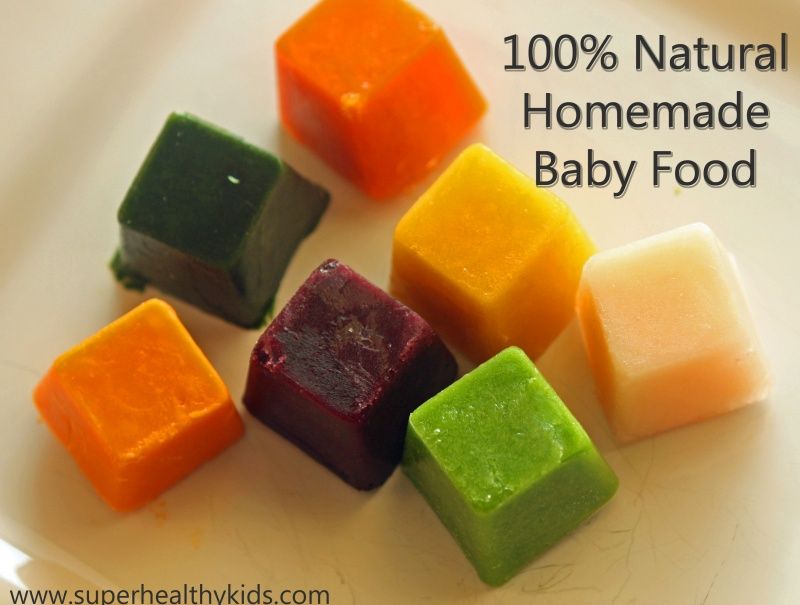 When a baby can start on solids is determined by their own rate of development, which generally comes between 4-6 months of age. Some of the developmental milestones babies need to reach in order to start solids include: if your baby has solid control of their head and neck, if your baby has doubled in weight, and if your baby is reaching for or opening their mouth when you eat (see my guide here). Before you start your baby on purees, you should consult with your pediatrician to make sure your child is developmentally ready for purees.
When a baby can start on solids is determined by their own rate of development, which generally comes between 4-6 months of age. Some of the developmental milestones babies need to reach in order to start solids include: if your baby has solid control of their head and neck, if your baby has doubled in weight, and if your baby is reaching for or opening their mouth when you eat (see my guide here). Before you start your baby on purees, you should consult with your pediatrician to make sure your child is developmentally ready for purees.
Can chicken be baby’s first food?
Chicken can 100% be your baby’s first food if you want it to be. It is recommended to wait to introduce the top eight allergen foods to your baby once a few other well-tolerated foods have been introduced, but otherwise, foods can be introduced in any order so choose whatever you are most excited for your baby to have.
Is chicken a common allergen for baby?
No, chicken is not a common allergen, however, as with any food, start with a small portion and be aware of any signs that might be an allergic reaction after introducing it.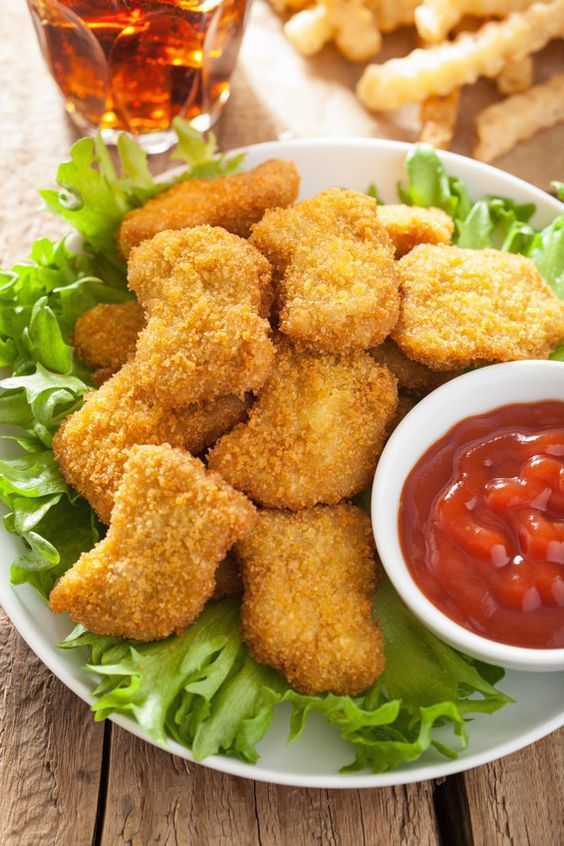
Does chicken cause constipation for babies?
No, chicken is not known to cause constipation in babies, however, it won’t really help with constipation either since it lacks fiber.
Can you freeze and then thaw the cooked chicken?
Yes, you can freeze and then thaw this chicken puree to serve to your baby. I would recommend you use fresh (not previously frozen) chicken and that you gently reheat it as to not make it too tough of a texture for your baby.
Great Chicken Combination PureesWhile this chicken baby food is great by itself, it can be a little intense for some babies. I recommend mixing it into one of your babe’s favorite purees as an introduction to the rich taste of chicken. Here are some great purees to mix with the chicken puree:
- Apples
- Sweet Potato
- Pear
- Carrot
- Broccoli
- Pea
- Mango
Recipe
Tips- Use a Slotted Spoon: When transferring the chicken from the saucepan to the blender, make sure to use a slotted spoon so you don’t add too much broth into the puree from the start.
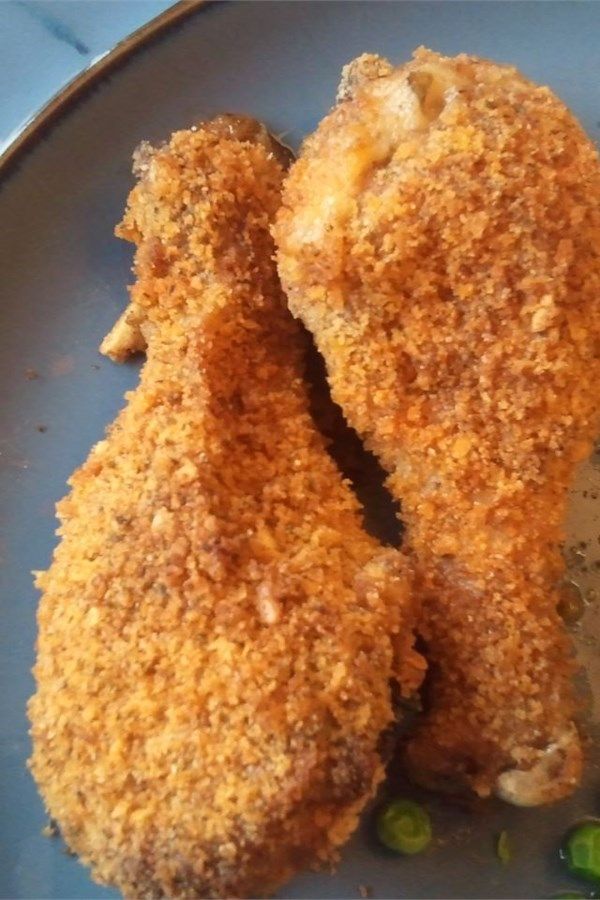 You only want to add broth if needed while blending. I had to add a 1/4 cup of broth to the blender while I was pureeing this chicken.
You only want to add broth if needed while blending. I had to add a 1/4 cup of broth to the blender while I was pureeing this chicken. - Reheat Gently: If you are freezing some of this chicken puree, reheat it in 20-second intervals. You don’t want to recook the chicken.
Puree Feeding Tips
- Trial adding a little seasoning or spice to purees – babies like flavor! Or consider changing the temperature of purees from time to time, to slightly warmed or slightly chilled. Varying these aspects adds to the sensory experience!
- Place a small amount of puree on the tray during spoon feeding, so that your baby can dip their fingers or hands in the puree. Allowing baby to explore foods in this way helps them learn to self-feed and can help them be more willing to try new textures and foods in the future.
- Have a spare spoon (or three!) – even very young babies often want to be involved in feeding themselves as much as possible.
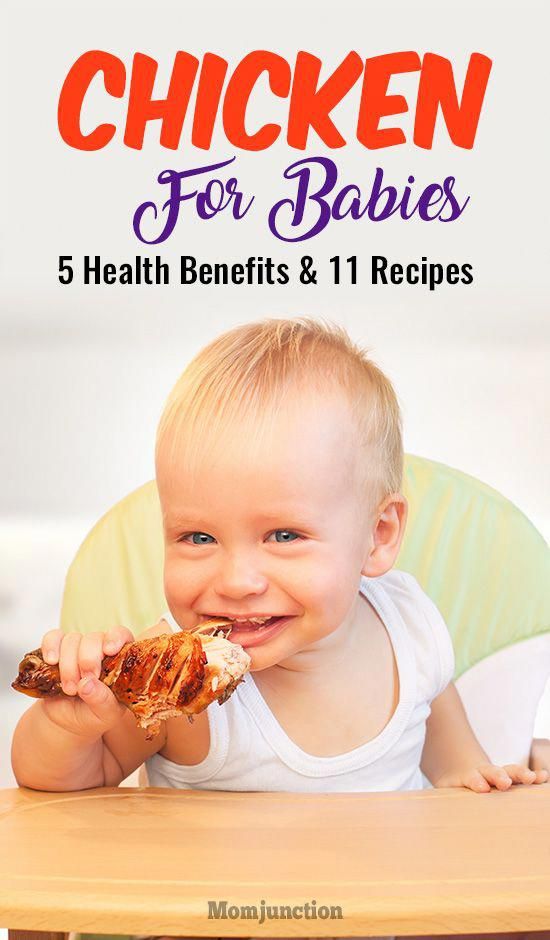 Giving baby an extra spoon to hold can be helpful in giving her a sense of control and also promotes hand-eye coordination.Allow baby to use spoons as a teether during the meal. There are many great options out there but a few we particularly love include the Olababy 3 Piece Set, the NumNum Pre-Spoon GOOtensils, and the ChooMee FlexiDip Baby Starter Spoons.
Giving baby an extra spoon to hold can be helpful in giving her a sense of control and also promotes hand-eye coordination.Allow baby to use spoons as a teether during the meal. There are many great options out there but a few we particularly love include the Olababy 3 Piece Set, the NumNum Pre-Spoon GOOtensils, and the ChooMee FlexiDip Baby Starter Spoons.
Or watch a shortened version of this video here.
- 1 8-ounce boneless skinless chicken breast or thighs, cubed
- 2 cups chicken or veggie stock, low-sodium or sodium-free
- 1 tsp dried parsley (optional)
Boil: In a medium saucepan, bring the cubed chicken, broth and parsley to a boil over medium heat.
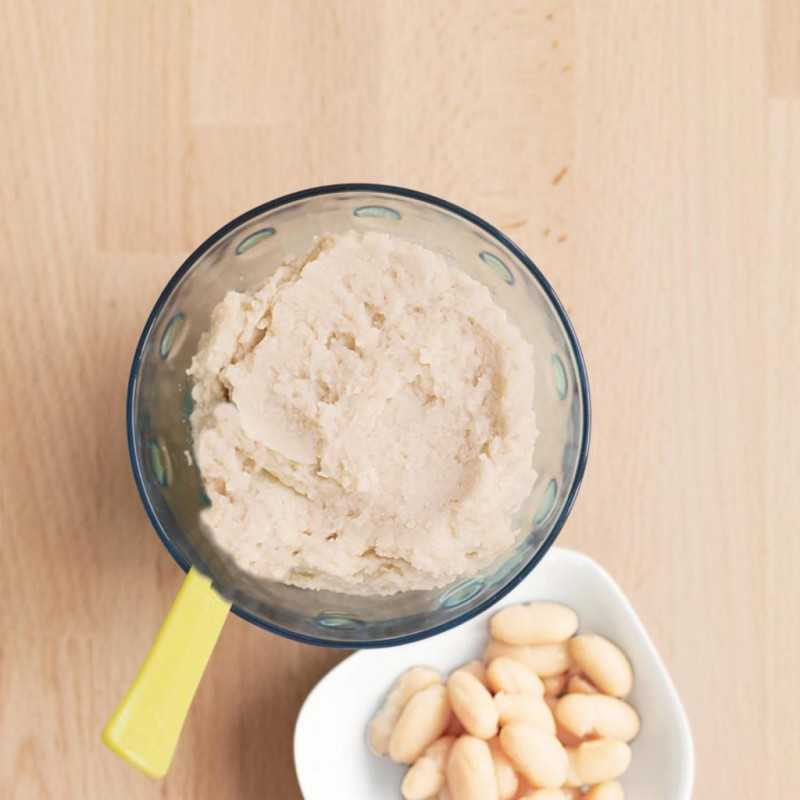
Simmer: Turn the heat down to low and simmer, covered, for 15 minutes or until chicken is just cooked through. Let cool slightly.
Transfer: Using a slotted spoon, transfer the chicken to a blender or food processor, leaving the broth in the saucepan. Reserve the broth
Puree: starting on low and working your way up to high-speed, puree the chicken until you reach your desired consistency, adding in broth in 1/4 cup increments if needed. I had to add in just 1/4 cup of broth to get the consistency seen in this photo.
Eat: serve to baby plain or added into another puree.
Freeze: store a small portion in the fridge and freeze the rest for another meal.
Extra Healthy Fat : For some extra healthy fat, this puree is also wonderful with a teaspoon of grass-fed butter (salt free) added to the blender right before pureeing.
Age: 4 months and up
Yield: roughly 12 ounces
Storage: Fridge – store in an airtight container in the fridge for 2-3 days. Freezer – can be frozen for up to 2 months (this and this are my favorite freezer storage containers).
Favorite Kitchen Tools: Get a list of my favorite kitchen tools to make the best baby food here!
Blender
Freezer Tray
Bumkins Baby Bowl
Grabease Utensil
Saucepan
Did you make this recipe?
Tag @babyfoode on Instagram and hashtag it #babyfoode!
Pin Recipe Email a Friend
Favorite Chicken Puree
Learn how to make iron-rich baby food with this easy recipe for Chicken Puree with three flavor combinations and easy storage tips. This works as a Stage 1, Stage 2, and Stage 3 baby food.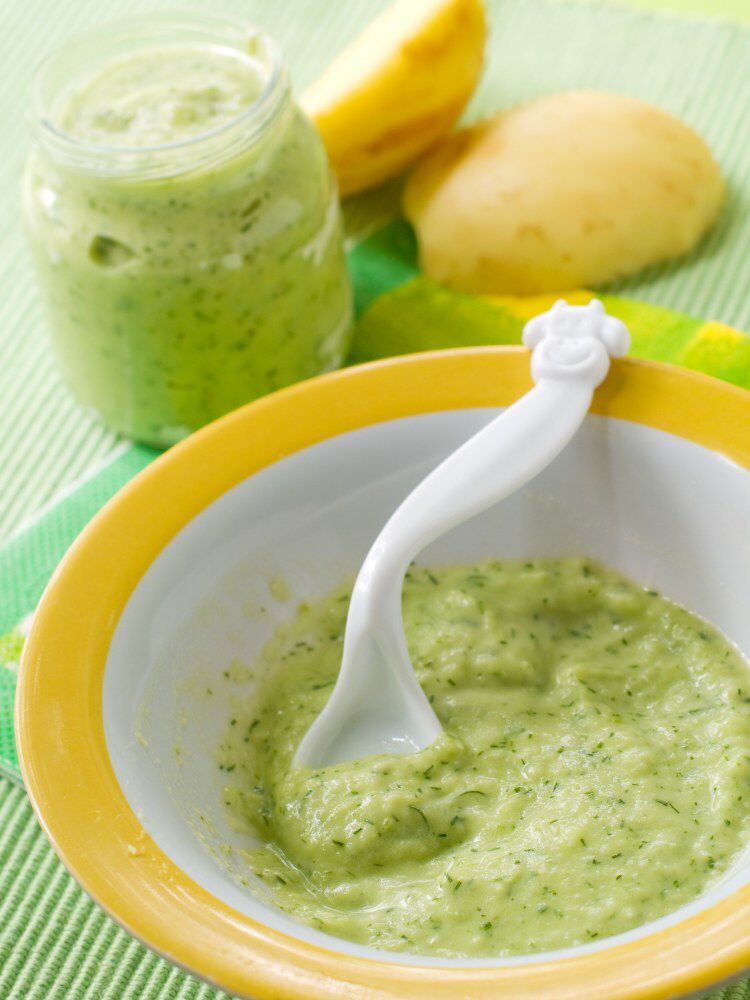
Chicken Puree for Baby
Incorporating iron-rich and protein-packed foods when you start offering baby solids can be a challenge, but this easy puree is a great option to have in the mix. It’s fast to make, stores easily, and can have a variety of flavors according to what you have on hand or prefer.
And you only need a few ingredients to make this baby food, so you don’t need to worry about spending a lot of money on ingredients you won’t be able to use up.
This chicken puree can be made super smooth and offered as a Stage 1 baby food, combined with other purees as a Stage 2 baby food, or pureed less smooth (or not at all) as a Stage 3 baby food.
You can even spread it onto toast or offer it on a preloaded spoon if you’re doing baby-led weaning.
Ingredients You Need
To make this recipe, you’ll need these ingredients:
- Ground chicken: This usually contains a mix of white and dark meat, so it’s a good source of iron.
- Olive oil
- Dried thyme, oregano, or cumin, optional: You can add a spice for more flavor.
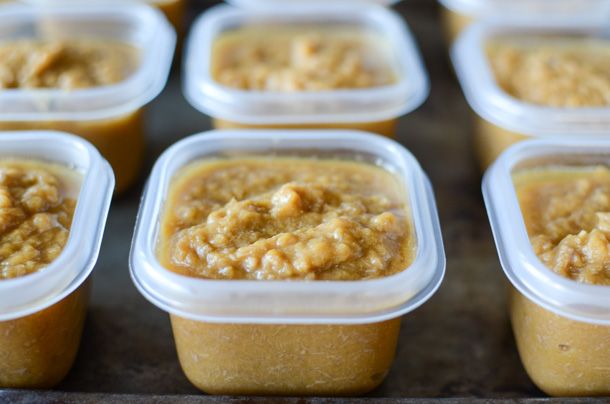
- Chicken broth: I use reduced-sodium chicken broth for flavor but less sodium. You can also use salt-free if you prefer.
- Additional baby food puree, optional: Add flavor and nutrients by mixing it with Sweet Potato Puree, Butternut Squash Puree, Avocado Puree, or Carrot Puree.
Step-by-Step Instructions
Here’s a look at how to make this baby food recipe so you know what to expect. Scroll down to the end of this post for the full recipe.
- Warm the olive oil in a skillet and add the chicken. Break up with a spoon.
- Cook until the chicken is cooked through and no longer pink.
- Add the cooked chicken to a blender with the broth and optional additional baby food puree. Add the optional spice if using.
- Blend as smooth as you like, adding more or less liquid as desired.
TIP: You can use water, breastmilk, or formula in place of the chicken broth if you prefer.
Frequently Asked Questions
Can I give my 6-month-old chicken?
Yes, it just needs to be prepared in a way that is easy for baby to eat. This puree has all the nutrients in chicken but is low in sodium and is easy to offer as a Stage 1 baby food. And since iron stores in baby start to run out around the 6-month mark, offering iron-rich foods is important.
This puree has all the nutrients in chicken but is low in sodium and is easy to offer as a Stage 1 baby food. And since iron stores in baby start to run out around the 6-month mark, offering iron-rich foods is important.
Can you puree chicken in a blender?
Yes, it is easy to puree in a blender if you add some liquid to help it easily move around the blade. Cook the chicken first, then puree it to avoid having raw meat in the blender.
What baby food combinations work well with chicken puree?
You can combine any veggie puree with chicken puree such as Carrot Puree, Pea Puree, Butternut Squash Puree, Sweet Potato Puree, Broccoli Puree, or even Avocado Puree. You can use what sounds like a yummy combination to you and go from there.
Chicken Puree for Baby Led Weaning
You can serve large pieces of chicken using the baby-led weaning, or you can spread some of this puree onto a finger-size piece of toast. This is a good option since it’s so easy for baby to eat.
This is a good option since it’s so easy for baby to eat.
You can also put some of the puree onto a baby spoon and hand the spoon to baby so they can feed it to themselves. This is a great option for feeding baby, no matter which style of starting solids you’re doing.
How to Store
Let the puree cool, then divide into small storage containers and store in the fridge for up to 5 days. Heat briefly before serving. Or you can freeze in an ice cube tray overnight, transfer the frozen cubes to a freezer bag, and freeze for up to 6 months.
Thaw 1-2 cubes in a small container overnight in the fridge or for about an hour at room temperature.
(Find more on storing baby food.)
Best Tips for Success
- Start with ground chicken for the easiest process of cooking this puree.
- Use reduced-sodium or no-sodium chicken broth. You can also use water, breastmilk, or formula if you prefer.
- Combine the chicken puree with Carrot Puree, Pea Puree, Butternut Squash Puree, Sweet Potato Puree, Broccoli Puree, or even Avocado Puree.
 Try any other baby food combination you think sounds good.
Try any other baby food combination you think sounds good. - Puree very smooth to serve as a Stage 1 baby food.
- Puree less smooth to serve as a Stage 2 and 3 baby food. You can also break up the pieces of cooked chicken, stir with the optional additional baby food, and serve to baby as a finger food.
- You may also like Baked Chicken Meatballs, Instant Pot Butter Chicken, Chicken Noodle Soup for Kids, and Easy Baby Soup.
I’d love to hear your feedback on this recipe if you try it, so please rate and comment below!
Prep Time 10 minutes
Cook Time 10 minutes
Total Time 20 minutes
Author Amy Palanjian
Cuisine American
Course Baby Food
Calories 128kcal
Servings 4
- ▢ 1 tablespoon olive oil
- ▢ 1/2 pound ground chicken
- ▢ 1/4 teaspoon dried thyme, oregano, or cumin (choose one, optional)
- ▢ 1/4 cup reduced-sodium chicken broth (or no sodium)
- ▢ 1/4 cup sweet potato puree (optional; or other baby food puree)
Add the olive oil to a medium pan over medium heat.
 When warm, add the chicken. Break up with a wooden spoon.
When warm, add the chicken. Break up with a wooden spoon.Sprinkle with desired spice, if using, and cook for 8-10 minutes, stirring occasionally and breaking up the meat into small pieces until fully cooked and no longer pink. Turn off the heat and let cool for a few minutes.
Transfer meat to a blender with the broth and sweet potato, if using. Blend well, starting on low and working up to high. Add more broth if needed to make a smooth puree.
Serve, or store in the fridge in ¼-cup portions or in the freezer for future use.
Green Pan Non-Stick Pan
Vitamix Blender
- Store in the fridge in an airtight container for up to 5 days. Freeze the puree in an ice cube tray overnight, then transfer frozen cubes to a storage bag, with as much air removed as possible, and freeze for up to 6 months.
- If you’d like to cook the sweet potato with the chicken, peel and dice 1 small sweet potato finely.
 Add to the pan with the chicken and cook until soft. Proceed with the recipe.
Add to the pan with the chicken and cook until soft. Proceed with the recipe. - Use reduced-sodium or no-sodium chicken broth. You can also use water, breastmilk, or formula if you prefer.
- Combine the chicken puree with Carrot Puree, Pea Puree, Butternut Squash Puree, Sweet Potato Puree, Broccoli Puree, or even Avocado Puree. Or try any other baby food combination you think sounds good.
- Puree very smooth to serve as a Stage 1 baby food.
- Puree less smooth to serve as a Stage 2 and 3 baby food. You can also break up the pieces of cooked chicken, stir with the optional additional baby food, and serve to baby as a finger food.
- To serve this for baby-led weaning, form the raw ground meat into little oval meatballs and cook in the pan for 10-12 minutes, or until cooked through. The shape should be easy for baby to hold and self-feed.
Calories: 128kcal, Carbohydrates: 4g, Protein: 10g, Fat: 8g, Saturated Fat: 2g, Polyunsaturated Fat: 1g, Monounsaturated Fat: 5g, Trans Fat: 1g, Cholesterol: 49mg, Sodium: 98mg, Potassium: 383mg, Fiber: 1g, Sugar: 1g, Vitamin A: 3363IU, Vitamin C: 3mg, Calcium: 11mg, Iron: 1mg
Tried this recipe?Rate in the comments and tag @yummytoddlerfood on IG!
How to cook chicken for first feeding
It contains animal protein, valuable amino acids not synthesized by the body, unsaturated fats, iron, vitamins.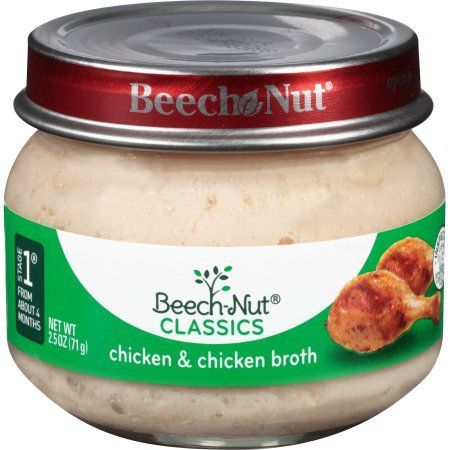 You'd better scold those who give chips and crackers to one-year-old babies, and those who feed a 5-month-old baby with fried cheesecakes, and meat at 4 months. Use seasonings after your child has tasted pure chicken puree, and add no more than one ingredient at a time.
You'd better scold those who give chips and crackers to one-year-old babies, and those who feed a 5-month-old baby with fried cheesecakes, and meat at 4 months. Use seasonings after your child has tasted pure chicken puree, and add no more than one ingredient at a time.
Watch video
If the child is allergic to any food or seasoning, this will help determine which ingredients to avoid in the future. Free and gratuitous use of the materials included in this site is limited to personal use. Ready-made canned baby chicken before the first meat feeding, the parents of the baby must decide whether it will be a ready-made canned puree from a jar or a homemade recipe. One thigh with bones and skin weighing 170 grams will produce about 85 grams of meat, but you will need more smaller thighs.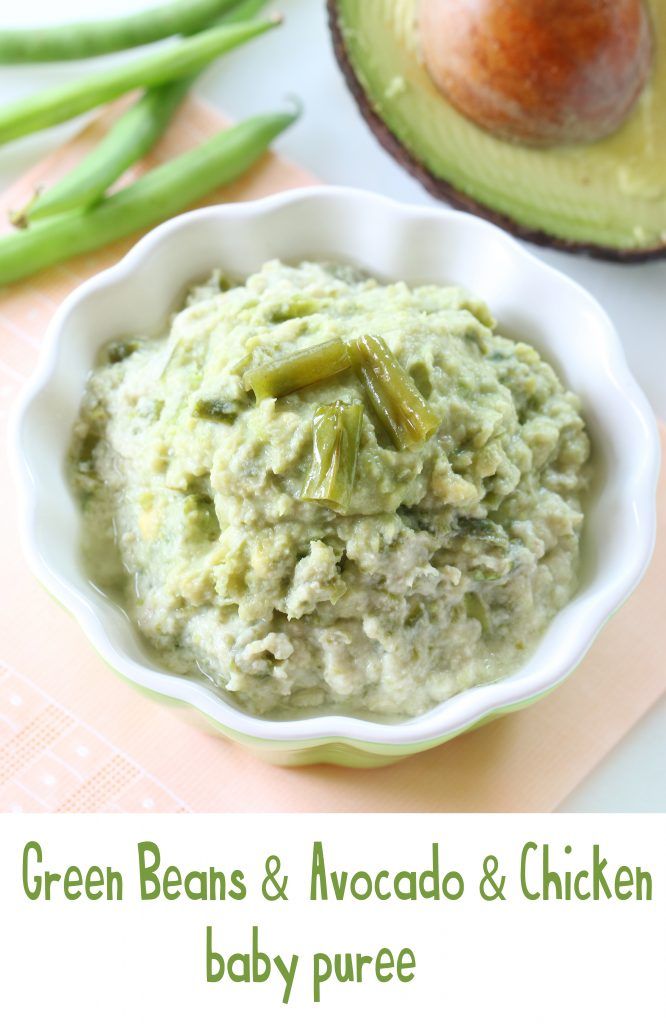 And besides, many of its allergens lose their activity when the product is subjected to high temperature treatment. Meat provides healthy muscle growth: 100 g of chicken contains 18.6 g of protein, which is concentrated during the cooking process, its amount per serving increases.
And besides, many of its allergens lose their activity when the product is subjected to high temperature treatment. Meat provides healthy muscle growth: 100 g of chicken contains 18.6 g of protein, which is concentrated during the cooking process, its amount per serving increases.
Chicken in baby nutrition recommendations and recipes
Allergies can often take the form of skin rashes: tiny red bumps appear all over the body that itch. To prepare chicken puree for a small child, you need to boil the chicken and then grind it in a blender or food processor with a little liquid. This product has several significant advantages, since poultry meat is low in fat and high in proteins, which are necessary for growth and development. If bronchospasm appears, urgently call an ambulance, by phone you can consult on the dosage of antihistamine, which may be at home. Add your child's favorite fruit or vegetable puree for extra nutrients. Cover the pot and cook the meat over low heat until it is no longer pink and releases clear juice when cut.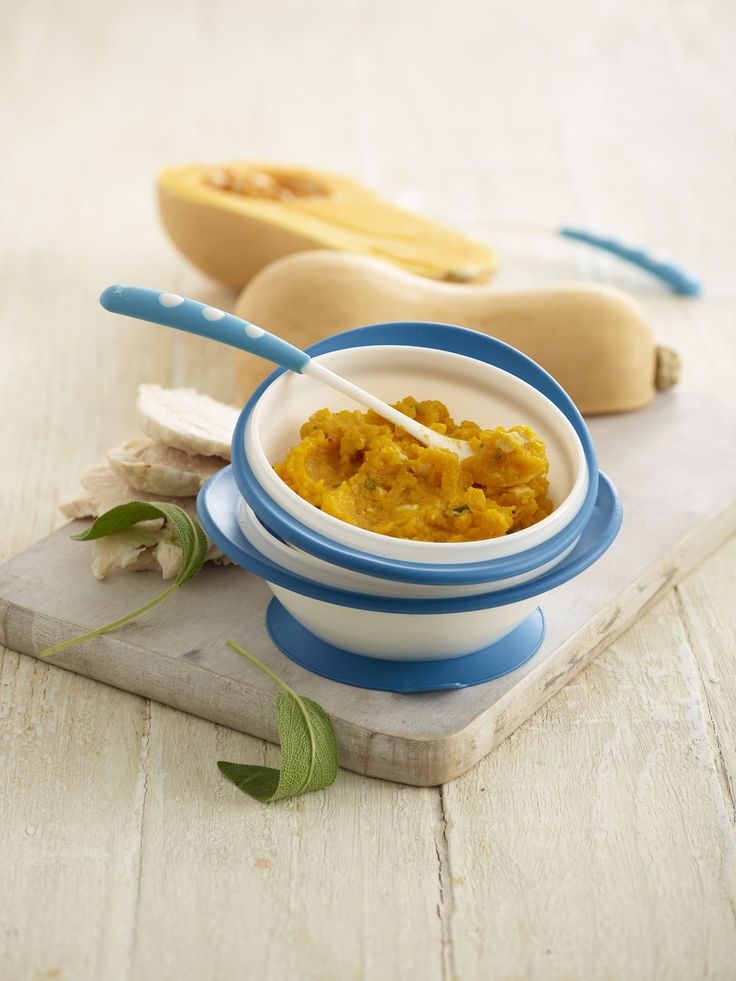
Boil meatballs add potatoes, pumpkin, onions, carrots, and cook until almost cooked, add greens and cook until done. Ready-made chicken puree can be offered to the child as an independent dish, or in combination with fresh vegetable purees. A lot of protein can be harmful to the intestines, since the baby's body is not yet able to produce enzymes that help digest such food. Before you puree fruits or vegetables, cut them into small pieces and boil them until they soften.
Baby chicken puree recipe with photo step by step
While you may be hesitant to feed your baby something with spices, experimenting with different additives and textures will help develop their taste. At what age can you give complementary foods from chicken meat pediatricians recommend starting to give complementary foods only from six months. Place about 1/4 cup (about 45 grams) of cooked fruits or vegetables in a blender or food processor along with the chicken meat.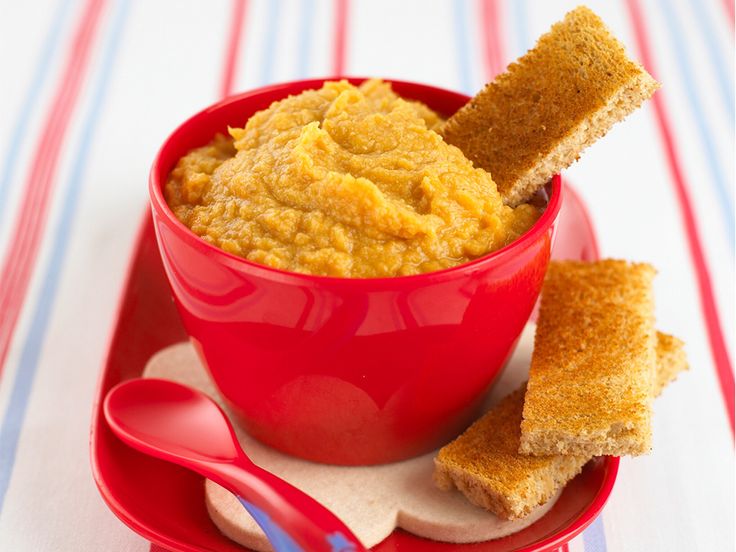 Salt the meat, add chopped onion, grated carrots and a teaspoon of flour to it, fry everything together a little (5-7 minutes).
Salt the meat, add chopped onion, grated carrots and a teaspoon of flour to it, fry everything together a little (5-7 minutes).
A month after the exposure to boiled chicken, the child can start giving chicken broth, adding it in an amount of 30-50 ml to vegetable purees or soups from vegetables and cereals. Tender chicken puree is not only easy food for the baby, but also serves as an excellent source of essential vitamins and minerals, such as iron and zinc. To make homemade sausages from chicken fillet, cut the meat into pieces and pass through a meat grinder. Chicken dishes often appear on the table of our compatriots, so every young mother is wondering at what age you can start giving your child chicken.
Recommended
Step by step simple and delicious salad recipes with photos
Here are simple salad recipes with photos that can be served with hot dishes, eaten as a light independent snack or wrapped in pita bread or pita, flavoring the dish with meat.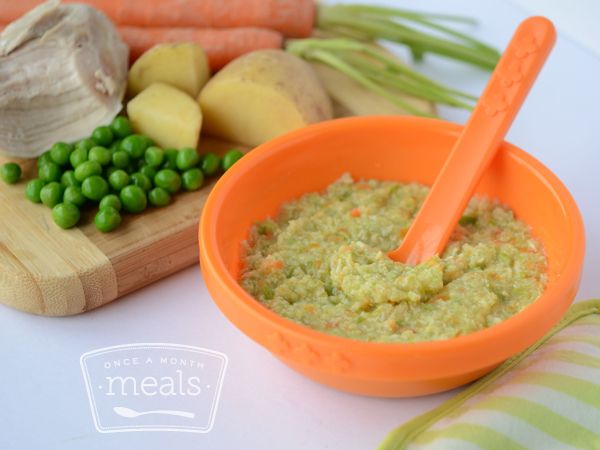
Salad Tenderness with apple, eggs and cheese recipe with photo
How to cook porcini mushrooms 17 simple recipes
Dishes from porcini mushrooms. White mushroom or "Borovik" is the most valuable and nutritious mushroom with a pronounced taste.
Vegetable purees for baby food recipes
You need to start introducing vegetables into your baby's diet with a single-component puree.
Multicooker Vitek VT 2021
This offer is valid for your city.
What to cook with pork 20 quick and tasty recipes
You can correct overdried meat only by thinly slicing it and dipping it into an oil or cream sauce, preferably with herbs or.
How to cook meat puree for babies
About nutrition
- Photo
- Parents
Babies will not try baby meat puree until they are 7-8 months old. At this age, the child grows and develops intensively, and the iron reserves that he accumulated while he was in his mother's tummy and during breastfeeding are depleted in his body.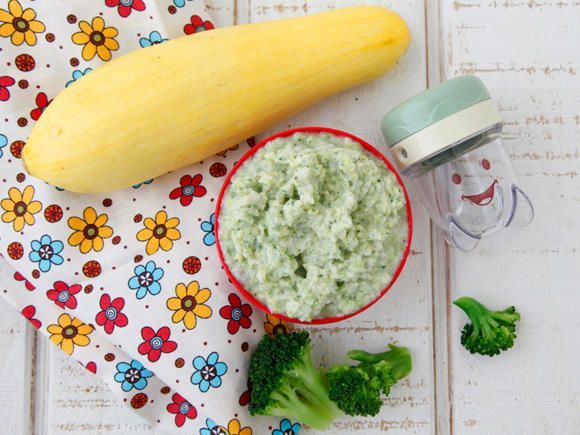 It is during this period that it is recommended to introduce baby meat puree into his diet. Meat is the main source of complete animal protein, which is necessary for a growing man to protect against infections, normal development and formation of teeth and bones. Properly prepared meat puree for the first feeding contains easily digestible iron, phosphorus, potassium, magnesium, zinc, B vitamins. It also contains extractives that stimulate the production of digestive enzymes and the digestive system.
It is during this period that it is recommended to introduce baby meat puree into his diet. Meat is the main source of complete animal protein, which is necessary for a growing man to protect against infections, normal development and formation of teeth and bones. Properly prepared meat puree for the first feeding contains easily digestible iron, phosphorus, potassium, magnesium, zinc, B vitamins. It also contains extractives that stimulate the production of digestive enzymes and the digestive system.
It is worth remembering the rules for the introduction of complementary foods. A new product is introduced gradually (over 5-7 days) starting with a small amount. It should be given in the morning to mark an unwanted reaction. Complementary foods are given from a spoon before breastfeeding or formula milk.
When feeding with mashed meat, start with a portion of 3–5 g (that’s 1/2 teaspoon), so that, gradually increasing its size, reach 60–80 g by 1 year. you can buy in the store, ready-made. Is it worth it to "fool around" with home cooking? It's up to you. There is no single answer to the question of which meat purees are best for your baby. But we think you will agree that a homemade recipe guarantees confidence in every ingredient. Yes, and cooking mashed potatoes at home is not difficult. 9Ol000
Is it worth it to "fool around" with home cooking? It's up to you. There is no single answer to the question of which meat purees are best for your baby. But we think you will agree that a homemade recipe guarantees confidence in every ingredient. Yes, and cooking mashed potatoes at home is not difficult. 9Ol000
plastic or metal spoon
meat cutter
plastic cutting board (more hygienic, wood is much more difficult to clean, causing microbes to accumulate on it)
blender
actual piece of meat
1. Choosing meat
For the first feeding, it is recommended to choose hypoallergenic rabbit or turkey meat, which are easy to digest and contain little fat. Lamb and lean veal and beef are also not forbidden. Pork for babies will be too fatty and can cause a malfunction in the digestive system, chicken quite often causes allergic reactions.
It is recommended to buy meat for baby meat puree in a trusted store. Since any meat must pass veterinary control, the seller must carry a certificate confirming this procedure. Give preference to whole cuts of meat (not in cubes), fresh and juicy in appearance, not weathered. The cut of a piece of meat should be even, pink. A dark red or whitish cut indicates that the meat was either stored incorrectly, or is far from the first freshness.
Since any meat must pass veterinary control, the seller must carry a certificate confirming this procedure. Give preference to whole cuts of meat (not in cubes), fresh and juicy in appearance, not weathered. The cut of a piece of meat should be even, pink. A dark red or whitish cut indicates that the meat was either stored incorrectly, or is far from the first freshness.
To help a mother who is worried about the question “what to feed her baby”, we have prepared a material “What to feed a baby: a baby’s nutrition diary from birth to a year”
- Photo
- Parents
2. Preparing meat
Before preparing meat puree for the first feeding, it is necessary to thoroughly rinse the meat under running cold or warm water. Remove fat, veins, skin, films from it and free it from bones.
Then cut a piece of about 10 cm from the whole piece of meat.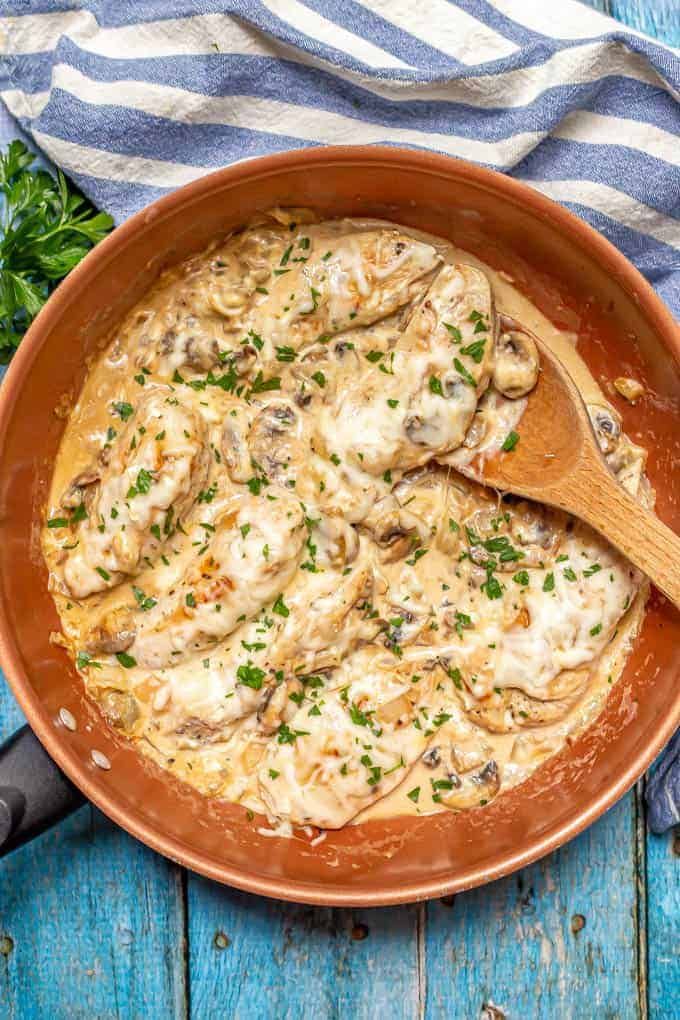 Meat puree, like other foods for babies, should not be stored. For this reason, at one time you will need a very small piece of meat. The remaining meat can be cut into larger pieces and put in the freezer. Just keep in mind that any food for babies can only be thawed once. A defrosted product cannot be re-frozen: temperature changes create a favorable environment for the reproduction of pathogens. So every time, intending to prepare meat puree for feeding, we take out 1 piece of meat from the freezer. For the first time, this amount is more than enough.
Meat puree, like other foods for babies, should not be stored. For this reason, at one time you will need a very small piece of meat. The remaining meat can be cut into larger pieces and put in the freezer. Just keep in mind that any food for babies can only be thawed once. A defrosted product cannot be re-frozen: temperature changes create a favorable environment for the reproduction of pathogens. So every time, intending to prepare meat puree for feeding, we take out 1 piece of meat from the freezer. For the first time, this amount is more than enough.
3. Rules for cooking meat for baby puree
Put the meat in a pot of cold water (remember, it must be filtered or bottled) and wait until it boils. After 5 minutes, drain the water (this is necessary to get rid of fat and extractives that make digestion difficult) and fill the meat with new water, it should cover it. Cook the meat until tender over low heat for about 2 hours (turkey, veal and lamb should be cooked until tender for 1-1.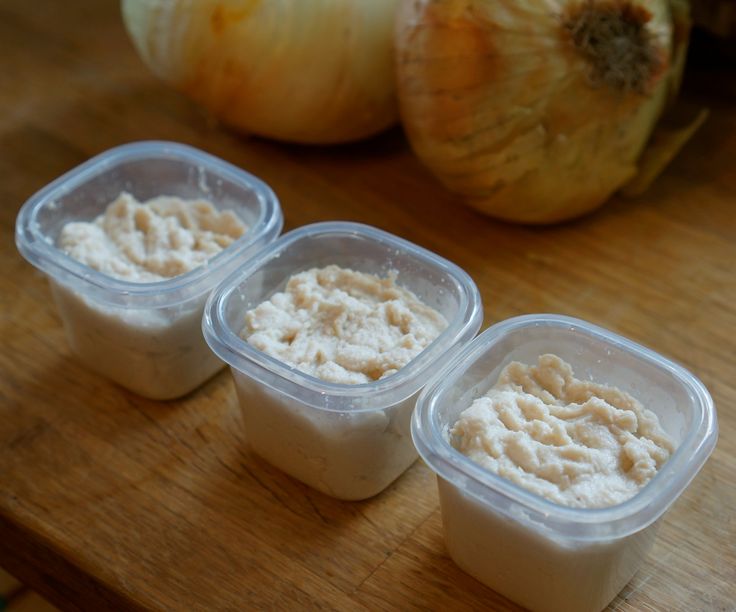 5 hours). If the water boils away, add it again. And remember that kids do not need to salt and add spices to the meat.
5 hours). If the water boils away, add it again. And remember that kids do not need to salt and add spices to the meat.
Find out how to make a menu for a one-year-old baby here: “Almost an adult menu: what to feed a child from one to two years old”
- Photo
- Parents
cut it into small pieces. Then grind the pieces in a blender.
To make puree a homogeneous consistency, similar to thick porridge, add a few tablespoons of the mixture or vegetable broth to it (meat broth is not allowed for babies!).
Ready-made meat puree can be mixed with vegetable puree, which is already familiar to the baby. So the child will more easily accept the new product. You can also pour a few drops of vegetable oil into the meat puree (7-month-old children are entitled to 5 ml).
The first serving of meat puree should be 0.5 teaspoon.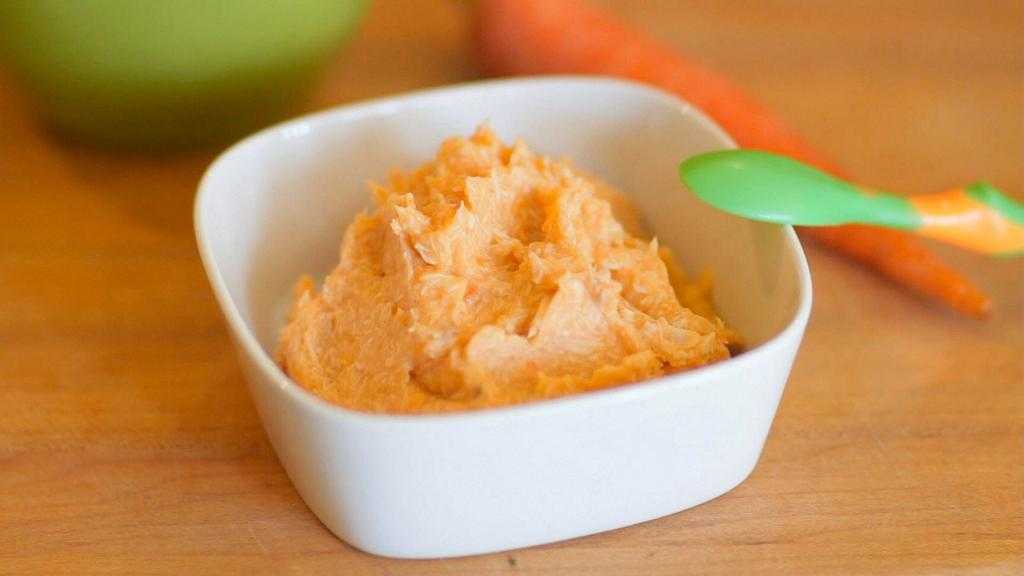 Pay close attention to your child's reaction. If everything is in order, after a week you can increase the portion. By the year the child should already consume portions of 60-80 g of meat. It is best to feed baby meat puree at lunchtime.
Pay close attention to your child's reaction. If everything is in order, after a week you can increase the portion. By the year the child should already consume portions of 60-80 g of meat. It is best to feed baby meat puree at lunchtime.
Read also: “When a child begins to chew and how to prepare for this”
- photo
- Parents
- Parents
Each mother has its own recipe, how to prepare meadow pure . We will present some of them.
Homemade beef mash for babies
What you need: 40 g beef, water, 1 teaspoon butter
Cleaned meat, free from bones, membranes and sinews, cut into small pieces. Stew the pieces in a small amount of water until fully cooked, about 2 hours. Cool the finished meat and scroll twice through a meat grinder, and then chop in a blender.